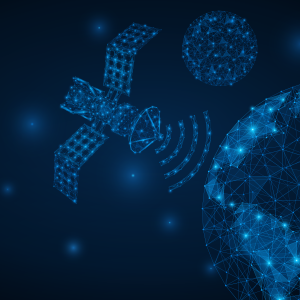What do you know about LEO Satellites?
Satellite technology is having a bit of a renaissance with multiple suppliers competing for business across the globe.
These suppliers include:
- Viasat/Inmarsat
- Amazon
- SpaceX
- Eutelsat
- Iridium
We are now seeing a consolidation of Satellite providers and a move towards merging LEO and GEO services within single organisations, such as Eutelsat (Eutelsat and OneWeb) and Viasat (Viasat and Inmarsat). These mergers will evolve the space communications market, with the development of new products and connectivity solutions which can capitalise on the advantages of both LEO and GEO technologies set.
The European Union will spend €2.4 billion investing in satellite from 2022-2027 with the aim of protecting communications.
LEO satellites are facilitating the growth of other sectors – these include AI (Artificial Intelligence), IOT, navigation and of course communications – helping define a rapidly growing ecosystem of technology.
About LEO Satellites
LEO satellites are distinct for their proximity to Earth. Their orbits, typically ranging from around 160 to 2,000 kilometres above the surface, offer several key advantages. One of the most significant is that due to their low orbit they offer a significant improvement in latency based on the time for data packets to traverse satellites to the earth stations.
This is particularly beneficial as it allows LEO satellites to support real-time voice, data, and video transmissions across the planet, powering everything from international phone calls to high-speed internet connections and supporting security arrangements such as VPNs which were traditionally problematic on geostationary satellites.

How LEO satellites can benefit construction IT decision makers
According to Intelsat 90% of IT decision-makers believe that satellite networks are more secure than terrestrial networks so considering satellite for construction sites makes sense.
Satellite networks are designed to be highly secure, making them a good choice for companies who need to transport sensitive data in remote areas. Satellite networks are inherently more secure than other types of networks, such as terrestrial networks, this is because satellite signals travel through space and cannot be easily intercepted. The ability to run conventional VPN technologies also means that they can now be used in the same way in the network as more traditional WAN technologies (Fibre, xDSL, FTTP, SoGEA etc).
LEO Satellite Facts
- LEO satellites can cover areas with little to no other option for connectivity – think remote areas of Scotland and beyond.
- LEO satellites can also offer connectivity on the move with specifically designed roaming tariffs, services are also available for Offshore applications (Marine, Oil & Gas etc).
- LEO satellite connectivity is more cost effective than GEO (geo-stationary) satellite connectivity.
- LEO satellites are in constant motion – they work together to provide uninterrupted coverage and single failures can be quickly dealt with by replacing satellites in the cluster.
- LEO Satellites move at a speed of approximately 17,000 mph, relative to the earth surface.
- LEO Satellites are less susceptible to jamming and interception because they have narrow beams in constant movement.
At Onwave we provide satellite connections as just one of the WAN technologies within our Managed Service portfolio. By combining LEO services with other technologies, we can increase the uptime, resilience and performance of your internet service.
With our experience of deploying over 3,000 LEO and GEO stationary satellite solutions over the past 10 years, Onwave is well positioned to simplify the deployment of satellite services for your business.








